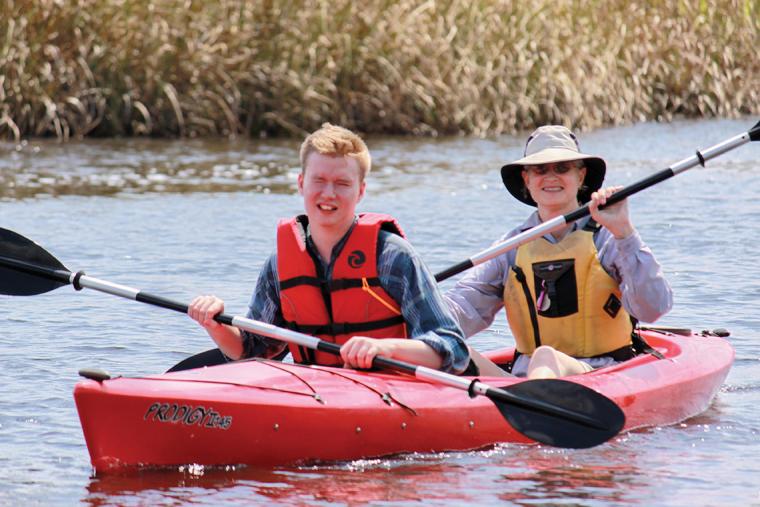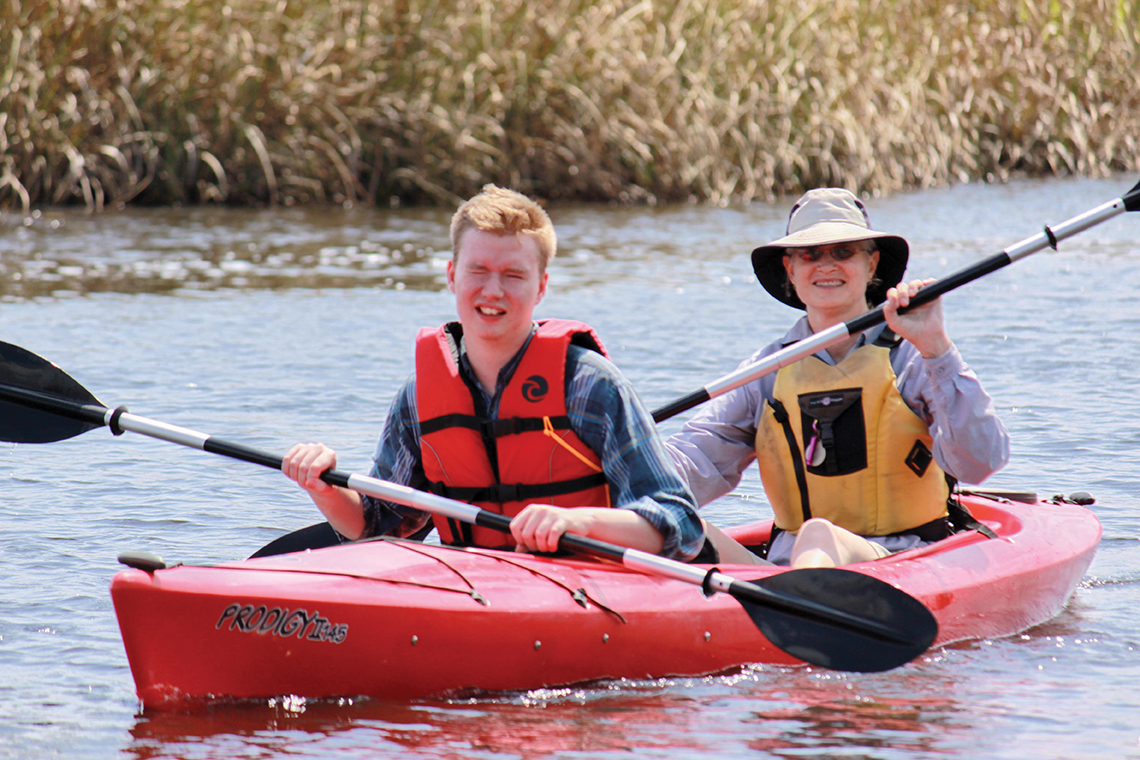
 When we talk about putting on events for athletes with disabilities (or even working with an existing event to add special divisions for those athletes), we often see planners start worrying. Something we’ve come to realize at the Florida Disabled Outdoors Association is that it’s not that people don’t want athletes with disabilities to attend their events; it’s simply that they are not familiar with working with them. That, in turn, makes them nervous about not being able to do a good job.
When we talk about putting on events for athletes with disabilities (or even working with an existing event to add special divisions for those athletes), we often see planners start worrying. Something we’ve come to realize at the Florida Disabled Outdoors Association is that it’s not that people don’t want athletes with disabilities to attend their events; it’s simply that they are not familiar with working with them. That, in turn, makes them nervous about not being able to do a good job.
Everyone has heard of Frequently Asked Questions (FAQs) but here at FDOA, we have seen some FMs (that means Frequent Misconceptions), and sometimes FMMs or Frequently Made Mistakes, when it comes to marketing and producing events. Fears about those FMs and FMMs are what hold a lot of people back. So let’s run through those, with the ultimate goal of helping people understand what planning this type of event does (and does not) involve.
Worrying you’re going to be overrun with athletes whose needs you can’t handle: This is sometimes the first FM we deal with because it’s the first thing that comes to people’s minds: What if I have too many people with disabilities and I can’t accommodate them all? In our experience, sports events of all types take time to build a reputation and to attract a crowd that returns each year. It’s unlikely your event will be so big the first year that people will be angry with you for not accommodating them. Even if the event draws a larger crowd than you expected, that’s not such a bad problem to have; after all, those athletes have buying power. They’re investing in your event and that allows you to offer more services.
The best way to be prepared is to ask everyone to list on the registration form exactly what their needs are. You can also ask them what they require that will allow them to participate. It doesn’t necessarily have to be complicated; for example, they may just want to bring a family member or friend who can assist them; in that case, you can simply comp that person’s registration. It’s an easy fix for something that will make their day pleasant.
Worrying that you won’t have any registrations from athletes with disabilities: This is the opposite fear: putting a lot of work into an event and not having it pan out. In fact, sometimes, we hear people say, ‘I don’t think there are any people with disabilities around here; I’ve never seen any at our event.’ But ask yourself this: have you actively tried to market to individuals with disabilities? If you haven’t, they might not feel welcome or they might not know the event can apply to them. Your event definitely won’t attract individuals with disabilities if you don’t show them it’s relevant to them.
Not using ‘people-first’ language in registration materials: This is one of those Frequently Made Mistakes. You want to avoid using outdated terms like “handicapped” or “disabled” in any of your materials, and instead use ‘people-first’ language, such as “person with a disability” or “athletes using wheelchairs.” This puts the focus on the person rather than on their disability.
Not showing your target audience they are welcome: Make sure your materials for the meeting clearly illustrate that this is an event for people of diverse abilities. For example, photos should show individuals with wheelchairs or walkers, children with developmental disabilities and so on. Right up front, you want to depict diversity; it allows your target audience (or the applicable segment of your audience) to know this is an event for them.
 Thinking the event will be more expensive than you can afford: Sometimes, people have not planned events for athletes with disabilities before, and they are worried they will have to rent, buy or lease adaptive equipment for everyone. Many times, however, resources are available right in your own community. Don’t be afraid to reach out to organizations that assist people with disabilities. V.A. hospitals, community organizations, non-profits, therapeutic recreation organizations, physical therapy practices and more can help. Let them know what you’re planning and ask them what they suggest. They may have equipment you can borrow for the duration of the event. (We’ve discovered that people in the community genuinely want to help and to make the event fun. If you reach out to those people, they’ll be glad to assist you.)
Thinking the event will be more expensive than you can afford: Sometimes, people have not planned events for athletes with disabilities before, and they are worried they will have to rent, buy or lease adaptive equipment for everyone. Many times, however, resources are available right in your own community. Don’t be afraid to reach out to organizations that assist people with disabilities. V.A. hospitals, community organizations, non-profits, therapeutic recreation organizations, physical therapy practices and more can help. Let them know what you’re planning and ask them what they suggest. They may have equipment you can borrow for the duration of the event. (We’ve discovered that people in the community genuinely want to help and to make the event fun. If you reach out to those people, they’ll be glad to assist you.)
Something we do for our SportsAbility event, which is a multi-sport event that allows people with disabilities to try different things, is to find those in the community who have experience with therapeutic services or with sports for individuals who have special needs. They may be able to share their expertise in horseback riding, water skiing, SCUBA and more.
You can also create less expensive versions of adaptive equipment. For example, if you have individuals with visual impairments who want to play beep baseball, you may not be able to access those balls locally, and buying them might be too much. At FDOA, we have put beeping timers into whiffle balls and used those. Sometimes, it’s just a matter of being creative in order to get around the problem.
With the above FMs and FMMs out of the way, here are a few other facts and tips:
Not all disabilities can be seen: Registrants for your event may have cognitive or sensory issues, or hearing impairments. Being aware in advance of the individuals and their needs (again, going back to asking people to explain on the registration form) can help you here.
Planning ahead is your best defense: Procrastination never has been the planner’s friend but sometimes, when people are intimidated by a request or a situation, it’s easier for them to set it aside and work on things they are more comfortable with. If, for example, you have been asked to find a sign language interpreter for a participant with a hearing impairment and you don’t know where to start, don’t delay in reaching out. The sooner you get someone lined up, the sooner you can move on to a task you’re more comfortable with.
Technology can help you: The community of individuals with disabilities, as well as their parents, families and friends, will take full advantage of the Internet and specifically, of social media. Not all people with disabilities can drive to be with one another, and maybe they can’t always talk on the phone. But they are really good at getting the word out about events that they enjoy. And like everyone else, they want to travel, have fun, socialize with friends, try something new and more. Their ability to communicate about fun things they’ve done, or fun things that are coming up, is what will help drive participation in your event.
And it’s not just the Internet, either, that can assist you with your event. Planners should know there is a free mobile app called AVA that makes group conversations possible between deaf and hearing-impaired people and their hearing peers. It works in real-time to translate the spoken word onto the screen, and to show who is speaking at any given time. And it’s certainly not the only app that can help people with disabilities, so take the time to investigate what’s out there, and to recommend things to others.
Remember that people will bring their family and friends: An accessible sports event should be accessible to everyone. You’ll need more than wheelchair-accessible areas in the bleachers; look to create seating for whole families who may not have the same impairments – but who want to share the experience. And remember that any event for athletes with disabilities will draw spectators and visitors with common issues. Special parking, signage, assistance and facilities can help.
There are all kinds of ways to make your event accessible to everyone. Keep an open mind, take advantage of resources and make sure to ask plenty of questions about what people need and how your event can serve them. You’ll find yourself with an event that grows year over year and becomes a success in every respect. SDM

